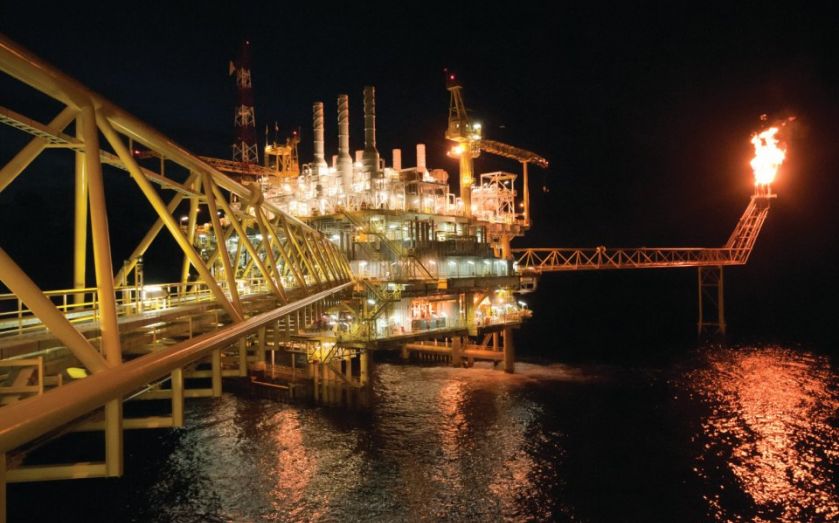Black gold: As prices stay low, is $50 oil here to stay?

Is $50 oil here to stay?
Oil has dominated the headlines as persistently low prices continue. The halving of the oil price from over $110 a barrel last summer was widely expected to be a short-term blip.
But one year on, prices remain depressed. Last week, Brent crude touched a five-year low of $48 and dipped again yesterday to below $50 per barrel.
The complex and unusual dynamics of the market mean opinion is staunchly divided over the future direction of oil prices. Some investors have taken lower prices as a buy signal. For them, $50 represents a “floor” to the price, and anything below that is excessively pessimistic.
Sales of oil exchange-traded funds (ETFs) have risen for the third consecutive week, according to ETF Securities. The company said its ETFS WTI Crude Oil Classic fund and a similar leveraged product attracted inflows of $20m and $13m respectively last week. However, those arguing oil prices will be lower for longer are just as vocal. “The polarisation of views encourages high conviction as two competing camps try to justify their view,” says Jeremy Lang from Ardevora.
PRICE RESET
Over the last few weeks, the bear case has appeared the most compelling, and this is the reason oil has brushed five-year lows.
Some analysts argue that every 20 years or so the oil price is “reset”. Looking at history, the oil price appears to suffer a large fall every several decades, and then it takes years, rather than months, to return to its previous highs. Arguably, oil at $100 was very unusual.
Oil companies appear to be preparing for this scenario of lower-for-longer prices. Capital expenditure across the industry has been cut by $200bn, according to a report from analysts Wood Mackenzie, and thousands of jobs have been lost.
There are unusual demand-supply dynamics in the oil market. Demand for oil is weaker than it has been in years, particularly from the Eurozone. China was the biggest force behind the wild demand for commodities in the last decade, as it was building, manufacturing and growing rapidly.
But now data from China paints a languid picture, and its recent announcement of 7 per cent annualised GDP growth in the second quarter was widely ridiculed as being falsely inflated.
SUPPLY
At the same time, supply has been much greater than the world’s industries need. Oil prices fell ahead of the lifting of Western sanctions against Iran, as the troubled state could resume oil exports.
There are reportedly thousands of barrels piled up at ports just waiting to be sold. This would add even more supply to an already saturated market – although some point out this supply could take eight months to reach the market.
But the chief driver of excess supply has been the American oil boom. In the last decade the US has invested heavily in hydraulic fracturing practices – known as “fracking” – which taps hard to reach shale deposits. It was so successful the US overtook Saudi Arabia as the world’s largest producer of crude.
OPEC’S ROLE
This appears to have rattled the Saudis. Since last summer the Saudi Arabia-led Organisation of Petroleum Exporting Countries has continually voted to keep its production levels high – despite the low oil prices hitting some Opec members.
The Saudis have been blessed with easily accessible oil which only costs $5-$6 a barrel to take out of the ground. They can bear $50 oil for a good time to come.
The main losers from low oil prices are Russia and Iran – both countries Saudi Arabia loathes – and also the US. Some believe Saudi Arabia’s actions have been deliberately aimed at breaking US oil production companies.
This is because fracking is a costly enterprise, and many US companies borrowed massively in the belief oil prices would always be around $100. Their businesses depend on oil costs being high enough to justify operating these complex projects.
The $50 price is crippling the shale industry, and six companies have filed for bankruptcy so far this year.
Amid all of this, the US dollar has been strengthening. Commodities are priced in dollars, so its relative strength is proving one of the biggest impediments to commodities becoming more attractive.
REBALANCING
The bear case misses one crucial point: that supply eventually levels out in response to demand.
The number of US oil rigs in action dropped sharply after the oil price was slashed, as it was simply not profitable to keep them operational. “The recent weakness will encourage producers to tighten supply,” says Aneeka Gupta at ETF Securities.
Moreover, lower prices can stimulate demand. “The market has swung too far towards pessimism, particularly over the prospects for demand. In many cases the recent falls in prices may actually accelerate demand and supply responses,” says Julian Jessop at Capital Economics.
PRICE FORECASTS
Some authorities have raised their price forecasts. The World Bank, for example, nudged its expectations up to $57 a barrel for the end of 2015, because of greater demand.
Similarly, the International Monetary Fund predicts Brent will end the year at $62.
This is still markedly below last year’s $100 level – and no-one is predicting a return to those levels anytime soon – but shows the incremental gains some believe oil will make.